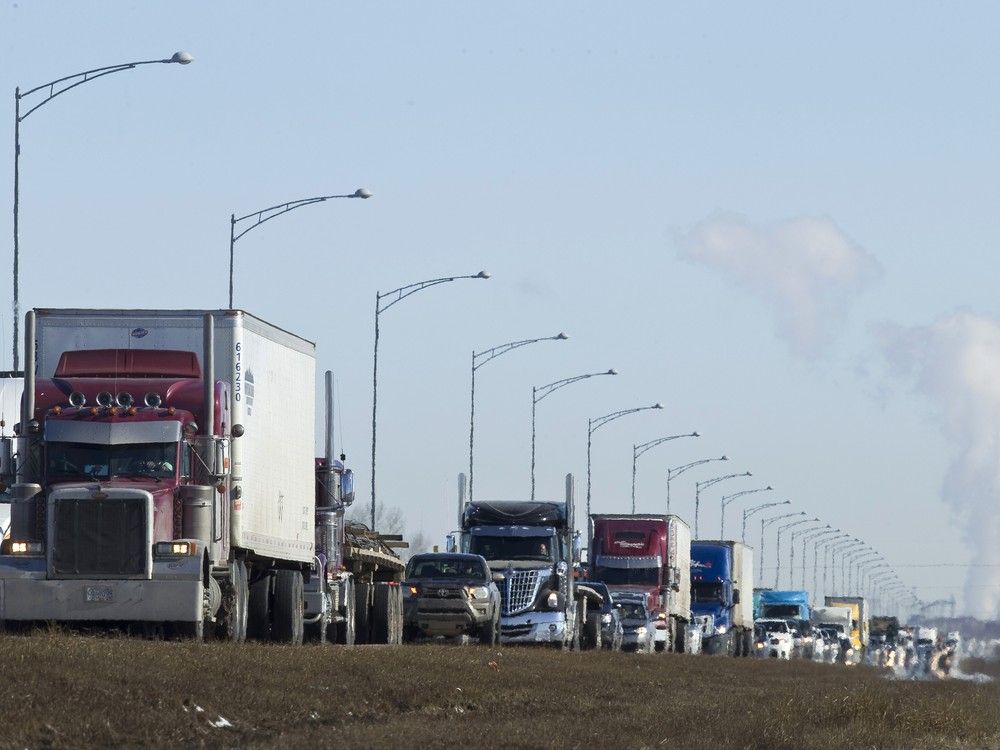The Impact of Inefficient Infrastructure Projects on Daily Commutes
The current state of infrastructure in Alberta is raising concerns among residents, particularly those who commute through the province’s busiest highways. A prime example is the ongoing bridge construction near the No. 41 turnoff on one of the main routes into Edmonton. This project has created a significant bottleneck, causing massive traffic delays that stretch for kilometers. Drivers often find themselves stuck in gridlock, moving at a walking pace as they attempt to enter the city.
This issue isn’t a temporary inconvenience; it has persisted for weeks, with no sign of improvement. What makes this situation even more frustrating is the lack of visible progress. During daylight hours, only a handful of workers can be seen, and their activity is minimal. There is almost no work done after hours or on weekends, which raises questions about the efficiency and planning of the project.
The minister responsible for transportation and economic corridors should consider visiting Edmonton from the airport to witness the impact of this project firsthand. It’s ironic that the department carries the title “Economic” when the ongoing construction is clearly hampering the flow of commerce and daily life. The environmental and economic consequences are also concerning. The fuel wasted due to prolonged traffic congestion is not only costly but also detrimental to Alberta’s reputation as a forward-thinking province.
It’s time for the highway department to reconsider its approach. Why not implement a 24/7 schedule for the construction until the job is completed? With a substantial budget surplus available, there’s no excuse for such inefficiency. The frustration caused by this bottleneck is not just an inconvenience—it’s a source of road rage and negative experiences for travelers, especially during the summer season when the city hosts major events like KDays and the Taste of Edmonton.
Residents deserve better. The current system is not working, and it’s time for change.
Concerns Over New Developments and Solar Energy Investments
Another pressing issue in Edmonton involves the potential impact of new high-density developments on homeowners who have invested in renewable energy systems. The city is currently reviewing its land use bylaw, but many residents feel that the effects of these changes on solar panel owners are being overlooked.
Homeowners who have spent $30,000 on solar panels are worried that new megaplexes or tall houses could shade their systems, significantly reducing their energy output. This concern is not unfounded, as similar protections exist in other municipalities like Millet. Residents are urging the city council to take action and include provisions in the bylaw to protect these investments.
This issue highlights the need for a balanced approach to urban development that considers both growth and the interests of existing residents. Without proper safeguards, the value of green energy investments could be undermined, leading to long-term financial and environmental consequences.
Zoning Bylaws and Community Division
The debate over zoning bylaws has sparked discussions about the balance between density and community values. While increased density is a reasonable goal, the current one-size-fits-all approach is creating division among residents. The present bylaw does not allow for flexibility and often infringes on personal choice.
Some argue that a more tailored approach would be more effective in achieving density goals without alienating neighborhoods. The influence of profit-driven developers in these discussions is a growing concern. It’s essential that the needs and preferences of local residents are prioritized over commercial interests.
Letters to the Editor: A Call for Engagement
Readers are encouraged to share their perspectives through letters to the editor. Submissions should be concise, ideally under 150 words, and include the writer’s full name, address, and contact information. All letters are subject to editing before publication.
The newspaper welcomes feedback and encourages readers to participate in shaping the conversation around important local issues. By sharing their voices, residents can contribute to a more informed and engaged community.







